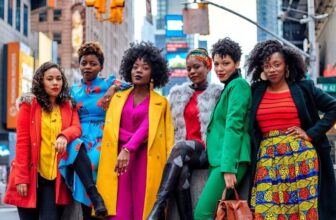The U.S. fashion industry is a trillion-dollar industry. Consumers spend millions of dollars on clothes, shoes, and other fashion items every year, and businesses must keep up with the demand.
Unfortunately, many fashion companies rely on unhealthy practices that seriously affect our planet’s health to meet the high demand for fashion pieces. For example, 10% of the world’s carbon emissions come from fashion production. In addition, 85% of textiles end up in landfills due to waste.
Since finding out how negatively the fashion industry impacts the environment, many companies are making a conscious effort to become more environmentally friendly by using eco-friendly materials and adopting sustainable manufacturing practices.
Let’s look at some innovative approaches fashion startups are taking to grow sustainable businesses.
Increased Use of Eco-friendly Fabrics
Some of the most common fibers used to make clothing and fashion accessories are cotton and polyester. This wouldn’t be so bad if both of these fibers weren’t on the least sustainable list.
It takes thousands of liters of water to produce cotton. And the water left over after production is tainted with dyes and chemicals, polluting water sources when companies don’t dispose of it properly.
Polyester is partially derived from a major source of pollution, oil. Also, polyester isn’t biodegradable. So, it can take up to 200 years to break down.
To mitigate the damage done by unsustainable fabrics, fashion startups are using more eco-friendly fabric options to produce their products. Here are three sustainable fabric options growing in popularity.
Hemp
Hemp is deemed one of the most eco-friendly fabrics available. It doesn’t rely heavily on natural resources for production. For example, while you need a significant amount of water to produce and process cotton, you can grow hemp with little irrigation.
It’s biodegradable and helps clean contaminated soil. Hemp is breathable, long-lasting, and durable too, making it a great choice for fashion companies.
Linen
The environmental friendliness of linen dates back a long time. It comes from the natural and renewable plant flax. The cultivation of flax requires a lot less water, pesticides, and insecticides, which is always helpful to the planet. Linen is also completely biodegradable when it isn’t treated with chemicals and synthetic dyes.
Sustainable fashion companies love linen because it’s strong and can be easily woven into lightweight fabrics to create pure linen clothing.
Wool
We can thank the fleece of animals for the natural fiber wool. Animal fleeces regrow every year after shearing, which is why wool is deemed a renewable fiber. Certified organic wool is recyclable and biodegradable.
Wool can be spun, shorn, and woven into various pieces of clothing, such as sweaters, sweatpants, and jackets. So long as the animals are raised sustainably and chemicals aren’t involved in bleaching and dying processes, this fiber is one of the most reliable sustainable fabric choices for fashion businesses.
The Rise of Bio-Based Materials
Aside from the eco-friendly fabrics mentioned above, there has also been a rise in the use of bio-based materials to produce clothing.
These materials are made from renewable resources rather than fossil fuels or animal parts. Mushrooms, timber, hempcrete, straw, and mussel shell are examples of renewable resources used in bio-based materials.
These materials have minimal impact on environmental health. It doesn’t take a significant amount of energy to produce these materials, reducing a fashion company’s carbon footprint tremendously.
Commitments to Minimizing Carbon Footprint
Speaking of carbon footprint, sustainable fashion startups are putting a lot of effort into minimizing their carbon footprint. As mentioned above, the fashion industry accounts for 10% of the world’s carbon footprint.
It’s only right that fashion companies with a commitment to sustainability are implementing strategies and initiatives that minimize their carbon footprint. Examples of the methods fashion companies are using to become carbon-neutral include:
- Using cloud-based storage solutions for data and documents
- Sourcing from suppliers on sustainable energy grids
- Upgrading to more energy-efficient machinery
- Implementing solar panels and other renewable energy sources
Also, according to a Statista survey, the top three actions fashion companies are taking to reduce their carbon footprint are:
- Using more recycled raw materials
- Using sustainable packaging
- Using more video-conferencing instead of partaking in corporate travel
Sustainable fashion companies banning together with their commitments to reducing their carbon footprints are making a difference in how eco-friendly the industry is becoming.
Denouncing Fast Fashion
Fast fashion refers to the process of producing low-quality clothing quickly and cheaply. Its speedy production allows for the clothing to be mass-produced and kept in stock to meet customer demand.
Sure, consumers can get these clothes for dirt cheap. However, fast fashion has several negative consequences.
For example, fast fashion hurts the environment because of its excessive water use, inappropriate disposal of chemicals, and contributions to carbon emissions. Poor wages and working conditions are common for workers in fast fashion factories. And the cheap clothing and accessories eventually end up in landfills.
Sustainable fashion companies are constantly fighting to denounce fast fashion brands and expose them for the harm they’re doing to people and the environment. For example, sustainable fashion startups are encouraging their customers to participate in slow fashion.
Slow Fashion prides itself on using recyclable materials to promote zero-waste practices. It’s about producing on a smaller scale to put out high-quality, handcrafted garments that use local suppliers and responsibly sourced materials.
This kind of fashion may be more expensive. But it lasts longer for consumers and supports a healthier planet.
Conclusion
It’s about time the fashion industry did something about the harm it’s doing to our environment. Real change will take a collective effort from all fashion companies. But for now, sustainable startups lead the way by adopting the above practices and others that promote eco-friendliness in fashion.






